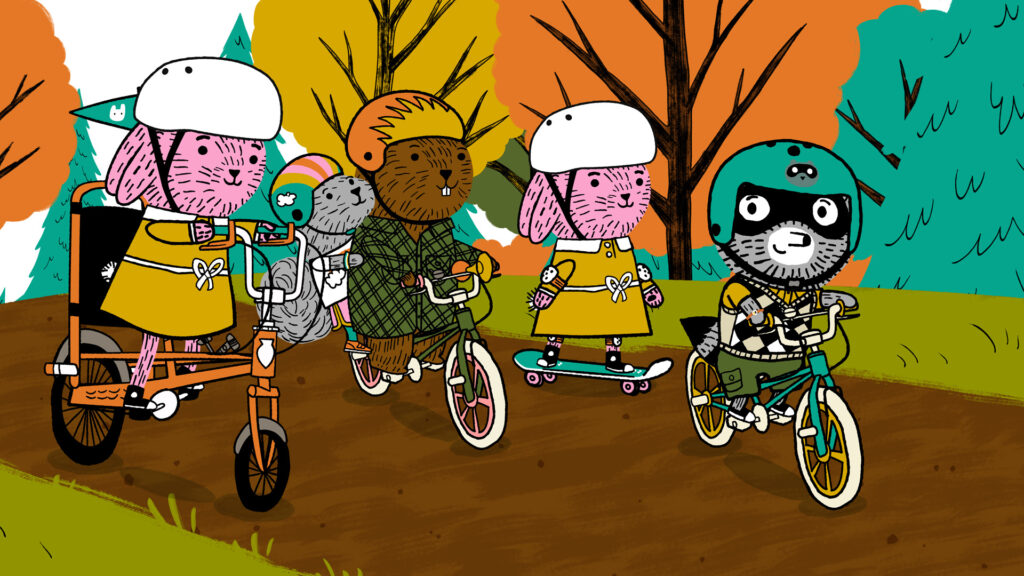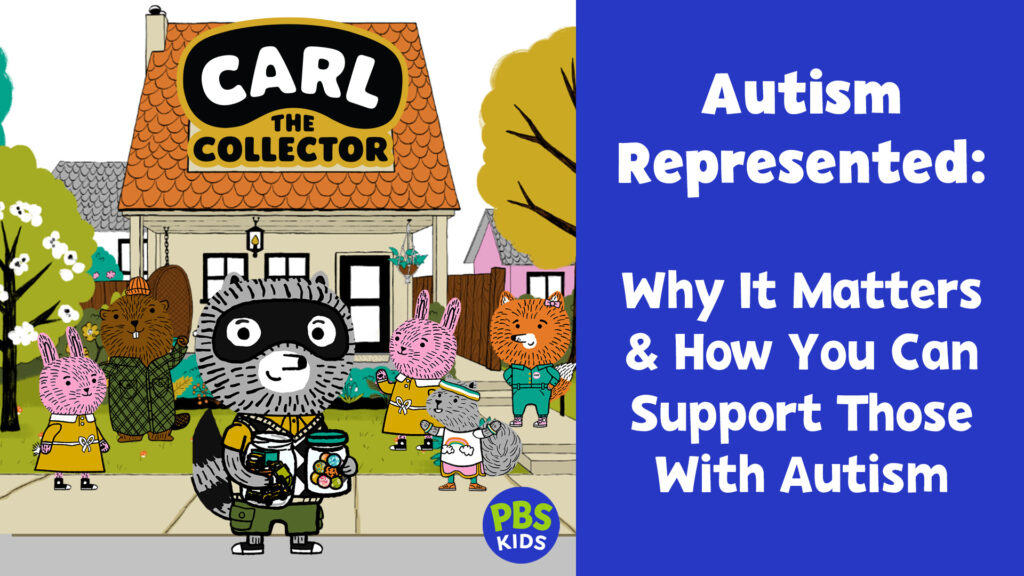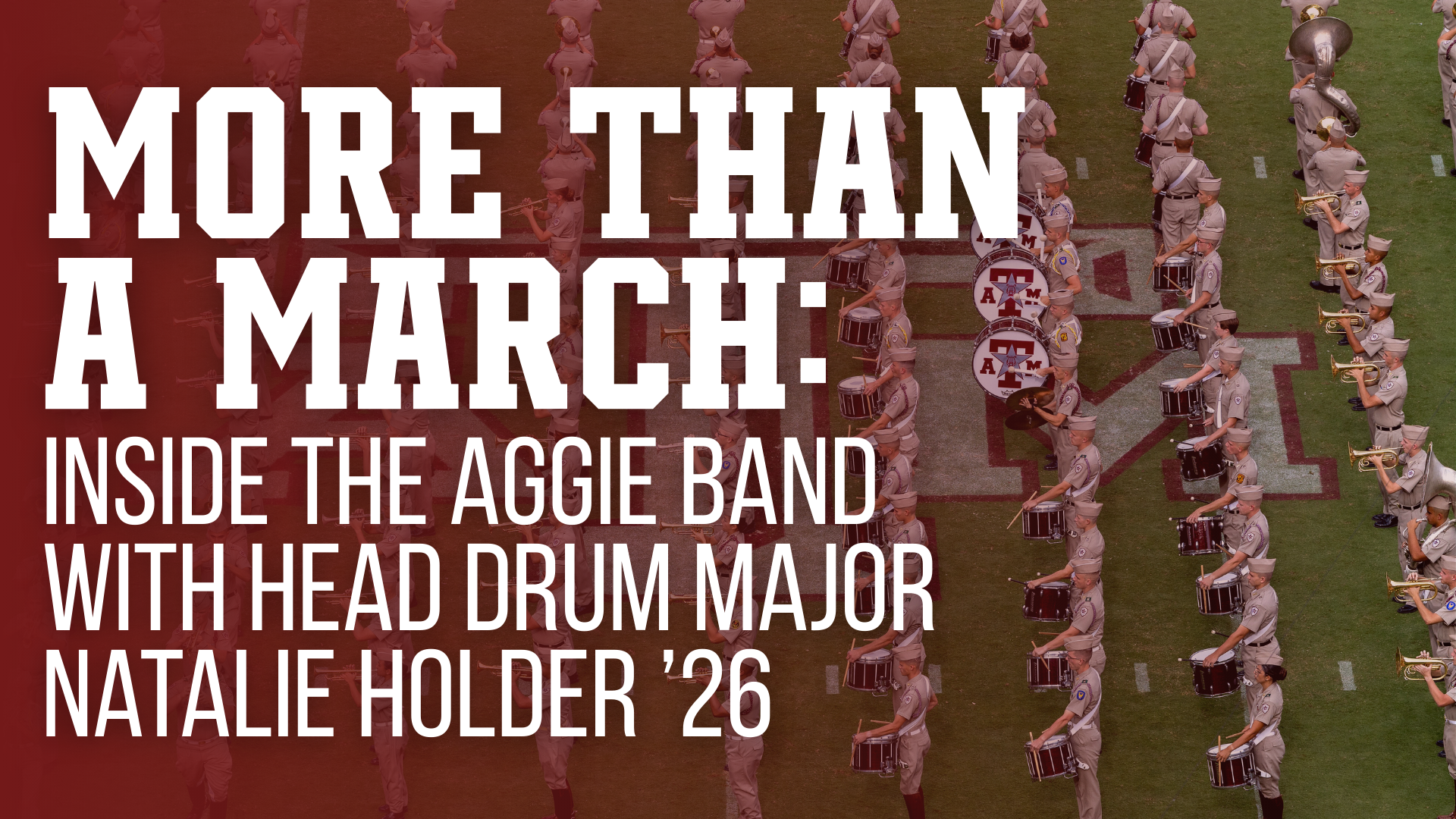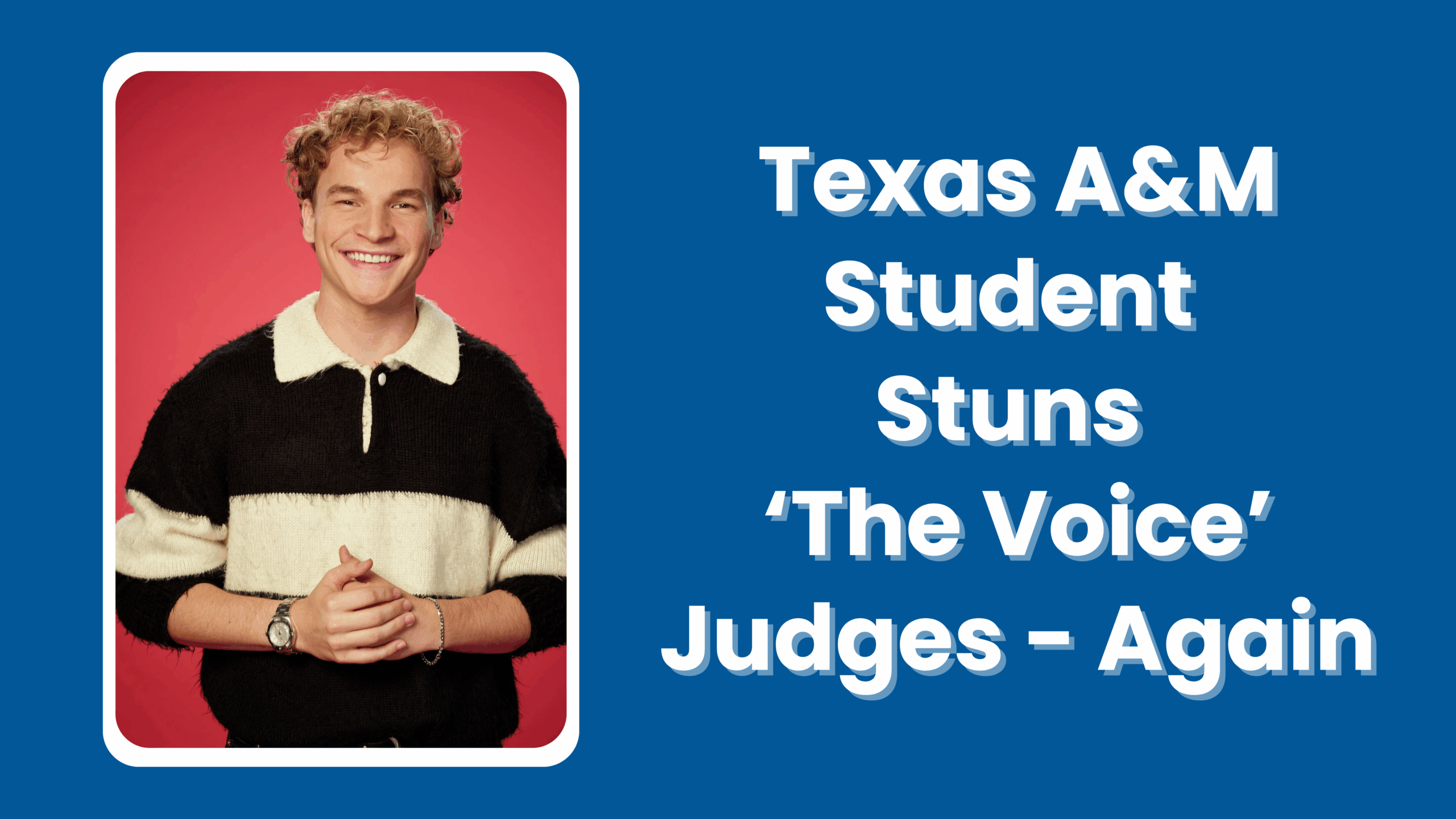This November on PBS KIDS, viewers will meet Carl, a warm-hearted raccoon who loves his friends and family. With a passion for collecting things and a knack for unique ideas, Carl is detail-oriented and embraces his identity on the autism spectrum. For the first time, PBS KIDS is introducing a show featuring central characters with the neurodevelopmental condition. KAMU is proud to air the show starting Nov. 14.
“Carl the Collector” showcases and celebrates differences, teaching children ages 4-8 that we all have something unique to offer. Parents: you can expect relatable stories, characters and messages for your kids. Producers say every viewer will see parts of themselves or someone they know in the show.
What does representation like this in mass media signify? We asked a Texas A&M student who has autism and a university staff member who works with autistic students for their perspectives ahead of the show’s debut.
Why is Autism Representation Important?
According to the Centers for Disease Control and Prevention, 1 in 36 American children are diagnosed with autism.
“There’s a lot of diversity within autism,” said Joshua Page, an access coordinator for the Texas A&M Department of Disability Resources who also leads the department’s Spectrum in Aggieland initiative. “The more we show different people – or in this case, animals – with autism, the more exposure people have to what that condition is like and what it might be like to work or be friends with someone with autism.”
Autism is not one specific set of symptoms — it’s a variety of different experiences. It can affect how individuals communicate, interact and perceive their surroundings.
“It’s really hard to characterize autism in a way that’s fair to everyone,” said Audrey Schabel, a Texas A&M senior who has autism. “Just because you’ve met one autistic person doesn’t mean you’re ever going to meet someone else like them again.”
There is a history of autism portrayal in mass media, but Page says it hasn’t truly been representative, focusing mostly on white men and autistic savants. The CDC says autism is less prevalent among white children than other racial and ethnic groups, and Page says only about 10% of the autistic population have savant abilities.
“Overrepresentation can be really misleading about the reality of autism,” Page said. “There are all sorts of people that come in all sorts of shapes and sizes, including raccoons like Carl.”
How Can the Show Help Kids Learn About Differences?
The production team behind “Carl the Collector” includes neurodiverse writers, production staff, animators, advisors and voice talent. They developed a set of characters representative of the autism spectrum.
“Differences can be an asset,” Schabel said. “I think the show can help children understand that God made every individual unique and special.”

Carl collects things and is a perfectionist, but his best friend Sheldon is good at connecting people. His other friend Lotta is also autistic but is hypersensitive to sounds, smells and food textures. Other friends include twin bunny sisters trying to define their identities and a hyperactive squirrel with a tree nut allergy. Despite their differences, they come together to play and solve problems in each episode.
Page says talking about autism through stories is a great way to make tough conversations accessible.
“Autism can be tough to talk about,” Page said. “People get stressed talking about autism because they’re afraid they’re going to say the wrong thing or that they’ll offend someone. Having a children’s story with animals makes that more accessible and lowers the barrier so you can have those sorts of conversations.”
What Difference Can Autism Awareness Make?
Page says one of the most important lessons people should learn is that many of the barriers people with autism face are external, environmental barriers, not internal barriers. Whether it’s a noisy or bright space or it’s the way they’re treated by others, external barriers can make life challenging for people with autism.
“The way we treat people affects them, right?” Page said. “When we practice ways of communicating with kindness and clarity, that helps to remove the barriers people with autism may face.”
People with autism sometimes struggle with understanding nuance or context. While kindness and clarity are behaviors we should practice with all people, they can especially affect the autism community.
“Being kind and understanding goes a long way,” Schabel said. “Also, looking for people who aren’t included and welcoming them into your activities is always appreciated.”
How to Watch Carl the Collector
PBS KIDS’ newest show premieres Nov. 14 on TV and streaming platforms. Watch every day at 7:30 a.m. on KAMU or 10 a.m. on our 24/7 PBS KIDS channel (12.3 or Optimum 18). Browse our TV schedule for more information.

Or skip the schedule and watch anytime on PBSKIDS.org or the PBS KIDS Video app. Fourteen full-length episodes will be available to stream starting on the kick-off date. Plus, look for new online games about Carl, coming to PBS KIDS Games throughout the rest of the year.
About Texas A&M Disability Resources
The Department of Disability Resources works to achieve an equitable learning environment for students with disabilities. They offer accommodations coordination, evaluation referral, disability-related information, assistive technology services, sign language interpreting, transcription services and more. They can also help with food allergies, dietary restrictions and housing accommodations.
Students who need support can visit the Disability Resources office in Suite 122 of the Student Services Building or email or call the office.
About Spectrum in Aggieland
Texas A&M’s autism support initiative, Spectrum in Aggieland, first began in 2017 to make the university a more accessible place for students with autism. Students find a safe space in the program and receive academic support, learn about campus resources, build social relationships and prepare for future careers.
“I’ve been in the program for my entire college career,” Schabel said. “It’s been helpful. I’ve really appreciated the resources and support it gives autistic students.”
The initiative also focuses on educating faculty and staff about autism so they can better understand and support students. Page says only then can campus truly be a more accessible place for students with autism.
“Making the environment a better place for people with autism means that we all work together,” Page said. “We all have a responsibility to have an education and an understanding about working with people with autism.”
Students who are interested in the program and self-identify as a person with autism, and faculty/staff interested in autism education, can email Joshua Page for more information.






